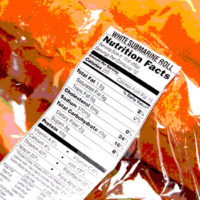“Dust” is not necessarily a term that strikes fear into those working within the food industry. Perhaps more so an everyday annoyance to most, dust can actually pose a significant threat in the industrial food sector.
 The vast majority of powders in the food industry can form explosible dust clouds if the particle size is small and moisture content is low. Whether a food facility handles products in powdered form, such as flour, custard powder, instant coffee, sugar, dried milk, or numerous other products and materials, combustible dust explosions could be a potentially life-threatening hazard.
The vast majority of powders in the food industry can form explosible dust clouds if the particle size is small and moisture content is low. Whether a food facility handles products in powdered form, such as flour, custard powder, instant coffee, sugar, dried milk, or numerous other products and materials, combustible dust explosions could be a potentially life-threatening hazard.
The combination of combustible dust, an ignition source, and oxygen is enough to trigger a fire. Add to that a concentration of particles and confinement of a dust cloud, and a catastrophic explosion can occur resulting in multiple fatalities and severe structural damage. The presence of dust therefore must be acknowledged and eliminated.
One of the most effective ways of preventing dust explosions is to focus on the design of the facility; all processes should be implemented with the reduction of particles in mind. Thus, adequate equipment and effective measures should be put into place, including dust collection systems such as polymeric flooring.
Polymeric flooring used in critical areas has long been recognized as one of the most effective ways of dramatically reducing dust and particulate counts whether it is foot, wheel or airborne, since the majority of dust particles entering critical areas does so at or near floor level.
Unprotected flooring enables particles to be picked up on shoes and on the wheels of carts where they are tracked into the critical area, resulting in them being redistributed back into the atmosphere. Even loose particles that settle on the floor can be easily crushed into very small particles and redistributed back into the air due to vortices created by movement, leaving the finest particles to form a dust cloud.
Short-range electromagnetic forces embedded within the cellular structure of polymeric flooring enable total efficacy in attracting, collecting and retaining over 99.9% of dust particles—pulling them from the air and inhibiting them in its surface. Furthermore polymeric flooring is ESD neutral—safely draining static discharge from the generation of electrostatic charge through the transfer of powder which can often accumulate on unearthed conductors and produce incentive sparks.
For optimal performance, polymeric flooring requires a progressive zonal approach—identifying areas where combustible dust clouds could occur, including all entrance and exit ways to critical areas to prevent the ingress of dust into the area.
Organisations also need to monitor and ensure that effective measures are in place in any area where material handling or processing equipment is taking place including where bins are being filled, equipment and trolleys are being moved and where powders are being transferred.
The transport, storage and handling of organic materials using silos, bucket elevators and pneumatic powder transport can all generate dust clouds and therefore polymeric flooring should also be implemented in corridors where transportation of powder occurs.
For more information, please visit www.dycem.com.



